Slow boat to Mompox
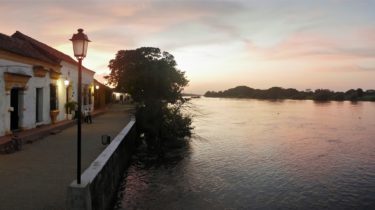
by Steve Hide
This story first appeared in The City Paper in 2017.
I have put some photos and practical info on Mompox at the end of this post
Most people love Mompox for its colonial character, a hidden river port still reeking of conquistadors’ sweat and the old Spanish empire. But for me the highlight is not the town but getting away from there. Nothing thrusts you deeper into the hot heart of Colombia than a slow cruise along its swirling muddy arteries on the ferry that carries cars and trucks to and from Magangue, a town on the western banks of the River Magdalena.
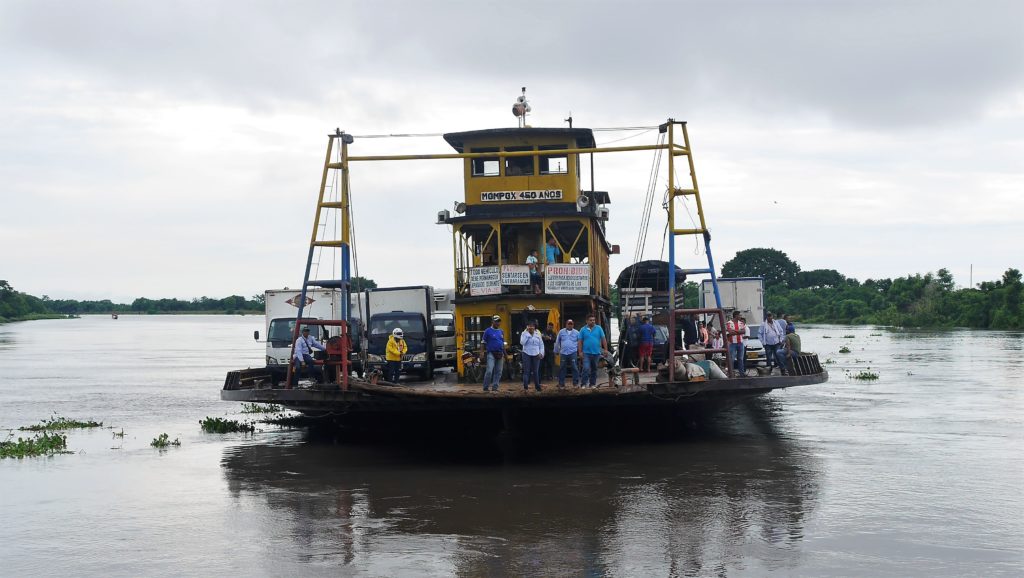
This old boat, which goes under the name ‘Mompox 450 Años’, has rammed the riverbank and dropped its steel ramp with a clatter onto the mud below. But an hour after it has docked I am still sitting in my car in a queue of cars waiting to board at La Bodega, a collection of small cafés where the road ends and the river begins on Mompox Island, 40 kilometres and 40 minutes’ drive from the town itself.

The ferry crew are in no hurry to leave, as they made clear by their slow saunter to their mid-morning tinto and arepas at nearby café where they now sit playing with their cell-phones. Occasionally they glance down the line of parked cars and trucks to see if they have enough to fill the ferry for the return trip to Magangue, a town that links to the main highways of north-western Colombia.
Of course you may well ask: why anyone doesn’t just build a bridge over the river instead of riding on a 70-year-old rust-bucket with the hydrodynamics of a giant frying pan while getting just about as hot under the mid-morning sun? And the answer is yes, actually there is a bridge being built, but rather slowly as it has to span 12 kilometres of river, swamps and wetlands.
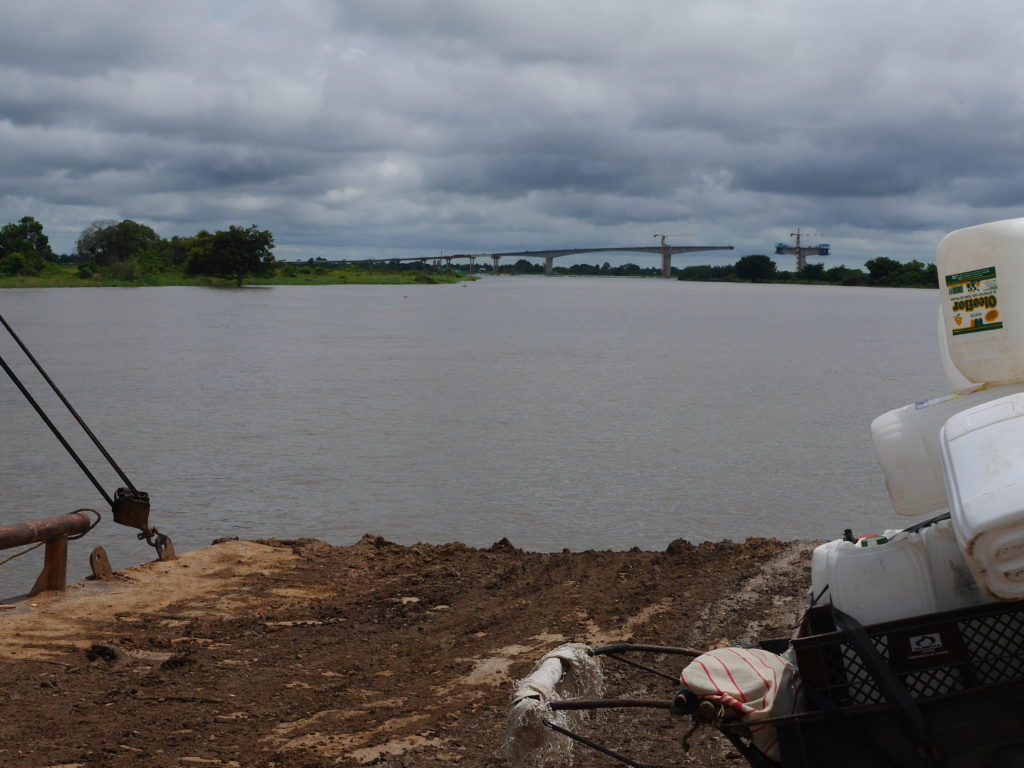
You see in this low-lying part of Colombia is a remarkable 500,000-hectare labyrinth of freshwater lakes and waterways where narrow spits of muddy fields dry out or submerge with the capricious flows of two big rivers, the Magdalena and the Cauca, whose mineral-rich waters bring life and death to this vast plain – never rising more than 35 meters above sea level – where water and sky meet in seemingly endless horizons. Think ‘Mississippi, Okavango, Pantanal and the Nile Delta’ and you’ll get the picture.
This bounteous La Mojana region has hardly made onto the tourist trail, partly because of lack of access and infrastructure. In fact most visitors’ will only touch on it in Mompox town itself, where there are motorboats that make trips through leafy canals to a nearby cienaga to swim in the cool dark waters. It is also a chance to see the birdlife and nimble basilisk lizards that run over the water itself.

But back waiting for the ferry at La Bodega it’s the human life that is grabbing my attention as a communal whoop of joy emerges from the crowd of taxi drivers, truckers, café workers and general hangers-on. They are celebrating the well-dressed traveller who just slipped and fell face down in the mud by the ferry ramp. He gets up, looking sheepish, and someone guides him to tap at a restaurant to get cleaned up.

Then there is more commotion as a large Dodge Journey skips past the line of waiting vehicles skids to a halt at the head of the queue creating a quick concert of frustrated honks from the cars behind. The Dodge occupants stay hidden in their air-conditioned chariot with the tinted windows firmly closed.
I have got out of my car now having realised nothing will happen until the Ferry Crew finish their slow breakfast, which seems to have no end in sight, and mingle with the various characters under a large tree by the ferry ramp.
This gives me chance to see close-up the Colombian art of overloading bicycles, in this case a guy delivering bread just of the ferry to a nearby village. He gets up to seven crates of bread before realising the chain has fallen off, so we help him lift the bike to refit it.
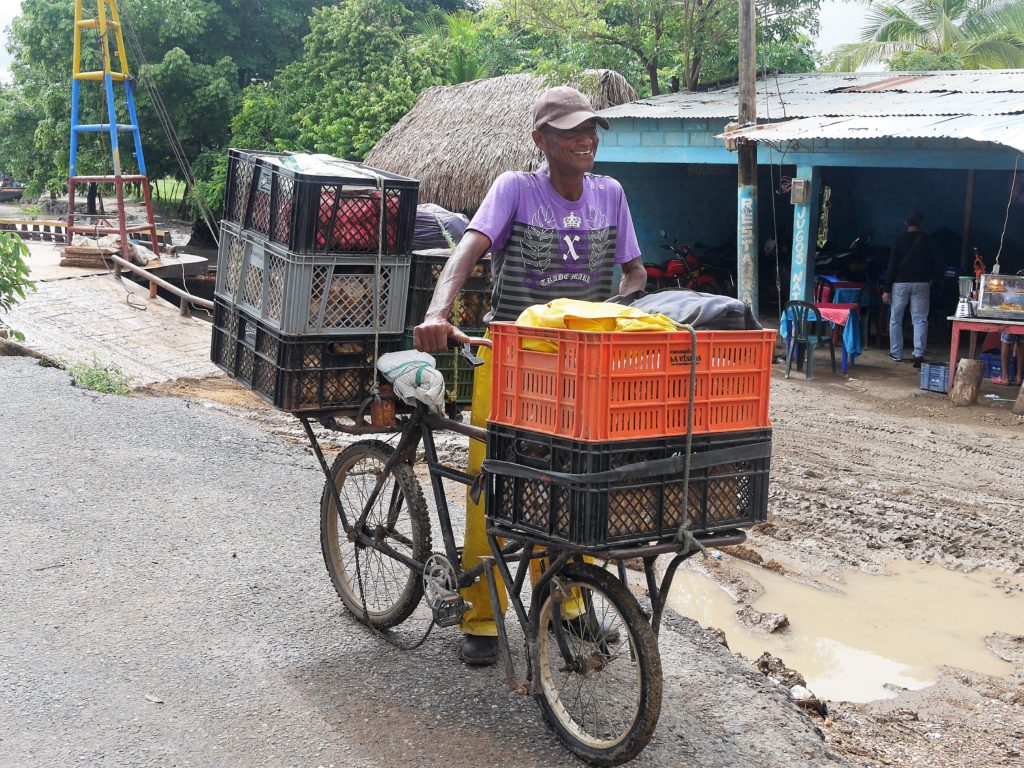
I ask some truckers why they use the ferry rather than drive the main roads that run further north to link two halves of Colombia. ‘Here we have to wait but it’s a shorter route,’ says one. One just shrugs: Why rush? I long ago realised that with all the hardships thrown at them on Colombian roads, truck drivers here are mobility Zen masters whose very survival depends on balancing natural and brute forces in the big Mack multi-wheel of existence.
Then suddenly things are moving and the Ferry Crew are up and walking abreast out of the café, radios in hand, aware of all eyes on them, striding across the mud like the new kids in town. The first score to settle is the dodgy Dodge. They send it reversing back down the road to make room for the large trucks, which always load first.
What happens next is a surprising masterclass of organisation as unwieldy big rigs are guided by the crew backwards down the muddy slope, engines growling, then lurching with spinning wheels onto the ramp and rocking ferry, then squeezed millimetrically into spaces, followed by smaller trucks, vans and then cars, with motorbikes, scooters bicycles and assorted wheeled carts filling in the gaps.
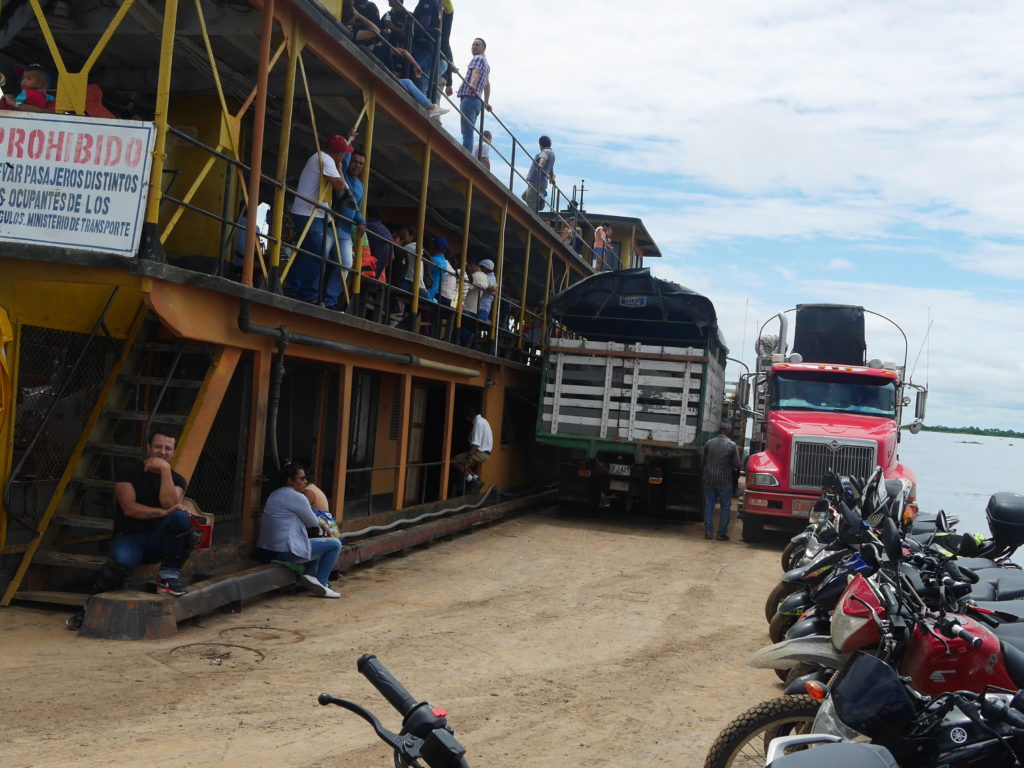
More surprising, given the general macho nature of this part of Colombia, is it is all directed by a woman. Inirida, as I later find out her name is, is the natural born leader of the Ferry Crew and keeps the team in line with a nod, a point of her radio, a shrug and a flick of the hair.
Later, chatting to her on the car deck, there are more surprises as she tells me she started off in the head office accounts department before, a few years before, being asked to audit the ferry loading.
‘Some crew were skimming the payments so they sent me here to count what goes on and off. I’ve never left,’ she says. I marvel at how completely she has adapted from book-keeping to life on the river.
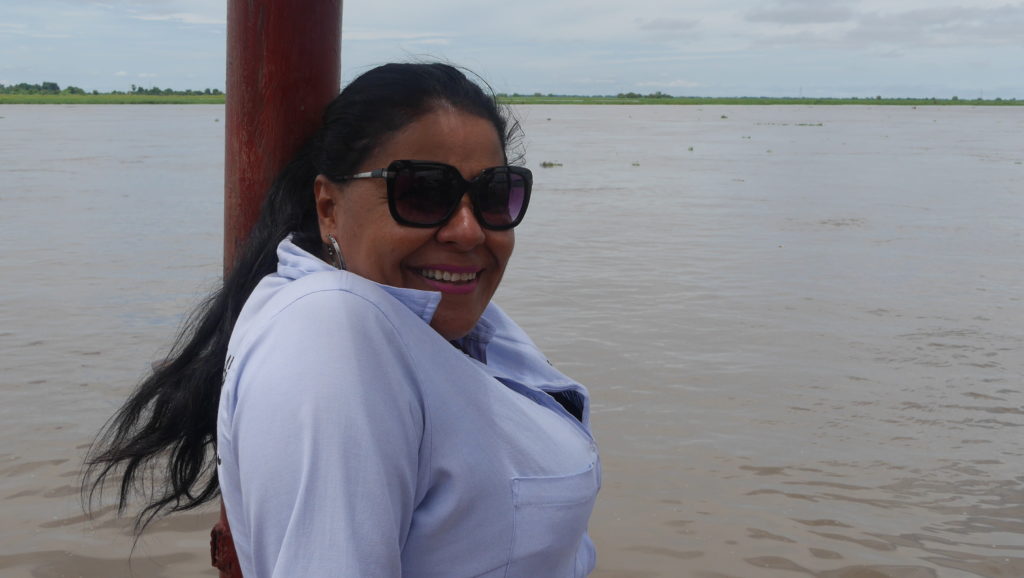
Now we are passing the unfinished bridge spans rising like grey giants over the green landscape. When finished, in maybe three years as someone suggests, what will become of Mompox 450 Años? Inirida shrugs. She is clearly infected by the same chronic nonchalance as the truck drivers.
‘Maybe the company will send us to another part of the river. There are plenty of places that need ferries. Or maybe they just break us up for scrap.’
In fact, talking to several people on the ferry, some who use it regularly, no-one seems particularly excited at the new bridge – which when complete will be the longest in Colombia and cut an estimated five hours travel time across this part of the country – but neither does anyone seem angry or rueful that the ferry will end. Que sera, sera. On the Rio Magdalena you go with the flow.
Practical stuff

Santa Cruz de Mompox is one of Colombia’s most historic towns, UNESCO World Heritage Site and after years of being overlooked it is now becoming a must-see tourist attraction. The official town website has some history here.
Based in the lowlands of the Magdalena river valley in central north Colombia.
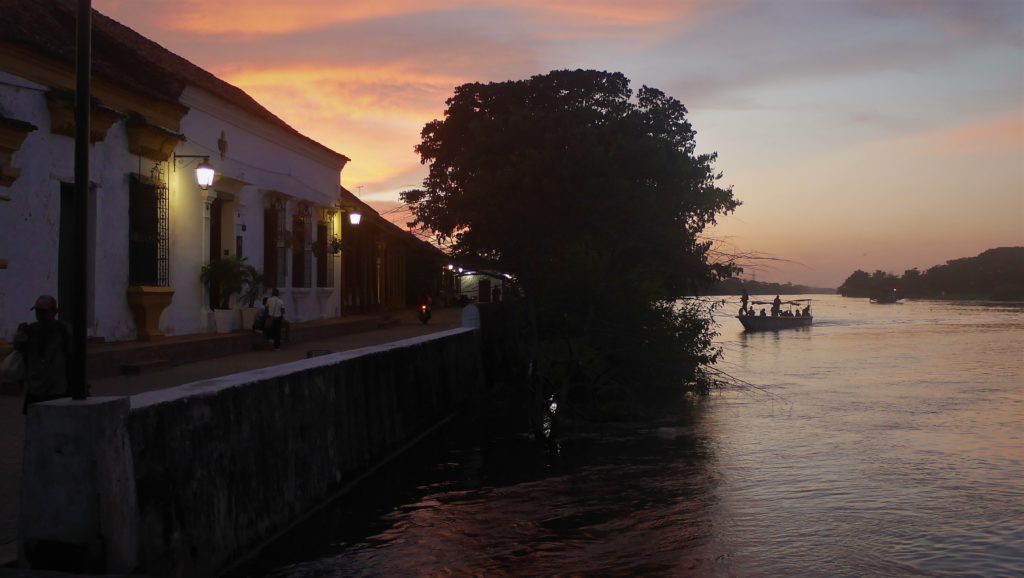
Where to stay: there are many hotels and hostel catering to taste and budget. Many foreigners head to the La Casa Amarilla.
Note: accommodation will fill up fast on holiday weekends, Semana Santa (week before Easter) and the New Year, when many Colombian travel. Weekdays and weekends outside the festive seasons will be quiet.
Getting there: Mompox is off the major modern roadways (though it was originally well-placed for river transport). There are routes from Cartagena, Baranquilla (and Santa Marta), from the western towns of Monteria and Sincelejo via Magangue. Very complete instructions on how to arrive on public transport can be found on the website of the Casa Amarilla.

Self-drive: . If you are travelling from Bogotá to Mompox, this make an interesting route to Cartagena and the north coast. The itinerary would be this:
Day 1 Bogotá – Aguachica, 590kms, 10 hours, long day drive on the Ruta del Sol (Bogotá – Guaduas – Puerto Boyacá – San Alberto – Aguachica. There are many cheap family roadside hotels in Aguachica, no need to book ahead.
Day 2: Aguachica – El Burro – Mompox, 190 kms, 4 hours, turn left at El Burro, take dirt roads (usually quite smooth) to El Banco, following the north bank of the Rio Magdalena. From there head to Guamal, cross the Puente de Los Golondrinas to the tarmac road to Mompox.
Day 3 Mompox. Visit the town historic sites, make a cienaga tour (by motorised canoe through the swamps), and end it with a sunset booze cruise.

Day 5. Mompox – Cartagena. 320 kms 6 hours. Head west to Talaigua Nuevo, cross the Talaigua Bridge to Santa Ana, head north to La Granja, where you will meet a main road; then head west and north again to Plato, Carmen del Bolivar and Cartagena.
Day 5. Mompox – Santa Marta (alternative) 320 kms 6 hours, same route as above, until you hit the main road at La Granja, then head east to El Difícil and Boscónia,from where the main Ruta de Sol will take you to Santa Marta.
Day 5 Mompox – Sincelejo (alternative with ferry) if you want to take the old car ferry, leave early (7am) drive from Mompox to Talaigua, then keep driving to La Bodega where the road ends at the ferry slipway. Join the queue (that’s why you left early: you can have breakfast at the slipway while waiting to board). There are no timetables: car ferries and barges leave when they’re full. Once on board, it can take some hours to get to Magangué. From Magangué it’s 100kms , 2 hours west to the main road to El Bongo (where you join the main north-south highway) and Sincelejo, with ‘good’ roads to Monteria and Medellin.
